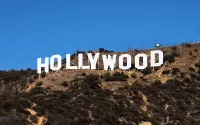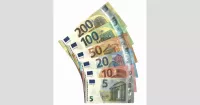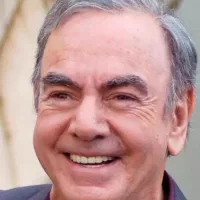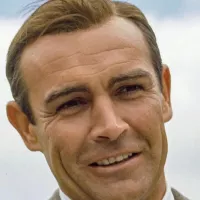A riot is a form of civil disorder involving a group of people engaging in violent public disturbance. This violence is often directed towards authority figures, property, or other individuals. Riots represent a breakdown of social order and are frequently triggered by underlying social, political, or economic grievances. They can range in scale from small, localized incidents to large-scale, widespread uprisings. The motivations behind riots are diverse and complex, reflecting a range of social issues and tensions.
1948: Statute Law Revision Act 1948
In 1948, The following provisions were repealed by section 1 of, and the first schedule to, the Statute Law Revision Act 1948 (11 & 12 Geo. 6. c. 62).
1962: Electoral Law Act (Northern Ireland) 1962
In 1962, See paragraph 13 of Schedule 5 to the Electoral Law Act (Northern Ireland) 1962.
1967: Criminal Law Act 1967
In 1967, the whole act, so far as unrepealed, was repealed by section 10(2) of, and part I of schedule 3 to, the Criminal Law Act 1967.
1970: Deaths Caused by Rubber Bullets
Between 1970 and 2005, seventeen deaths were caused by rubber bullets in Northern Ireland.
1977: Egyptian Bread Riots
In 1977, the Egyptian Bread Riots involved hundreds of thousands of people rioting after food subsidies were stopped and prices rose.
1983: Statute Law Revision Act 1983
In 1983, The statute 2 Hen. 5. Stat. 1, of which this chapter was part, was repealed for the Republic of Ireland by section 1 of, and part 2 of the schedule to, the Statute Law Revision Act 1983.
1986: Public Order Act 1986
In 1986, Riot became a statutory offence in England and Wales, under section 1(1) of the Public Order Act 1986.
1986: Section 10 of the Public Order Act 1986
In 1986, Section 10 of the Public Order Act 1986 was introduced.
April 1987: Abolishment of Common Law Offence of Riot
On April 1, 1987, the common law offence of riot was abolished for England and Wales.
1988: Israeli Army Rules of Engagement
In 1988, the Israeli army issued rules of engagement for the use of plastic bullets, defining a "violent riot" as a disturbance with the participation of three or more persons, including stone throwing, erection of a barrier or barricade, burning a tire.
1992: Los Angeles Riots
During the 1992 Los Angeles riots, there were 2,383 injuries, over 12,000 arrests, 63 deaths, and over 700 businesses burned, with property damage exceeding $1 billion. At least ten of the deaths were caused by police or National Guard forces.
1995: Merchant Shipping Act 1995
The Riot (Damages) Act 1886 and section 235 of the Merchant Shipping Act 1995.
2000: Football (Disorder) Act 2000
In 2000, The Football (Disorder) Act 2000 was introduced after rioting of England fans at Euro 2000. The act allowed offenders to be banned from football grounds for a set or indeterminate period and may be required to surrender their passport to the police for a period of time in the event of a club or international match, or international tournament, connected with the offence.
2005: Deaths Caused by Rubber Bullets
Between 1970 and 2005, seventeen deaths were caused by rubber bullets in Northern Ireland.
2005: Civil Unrest in France
In 2005, civil unrest in France lasted over three weeks and spread to nearly 300 towns. Over 10,000 vehicles were destroyed, and over 300 buildings were burned. Over 2,800 suspected rioters were arrested, and 126 police and firefighters were injured. Estimated damages were over €200 Million.
August 2011: English Riots
Two years after the English riots of August 2011, Edinburgh saw rioting, albeit localised to one specific area and not part of any bigger 'riot wave'.
Mentioned in this timeline

Los Angeles is the most populous city in California and...

Football is a family of team sports primarily involving kicking...
France officially the French Republic is primarily located in Western...

The euro is the official currency of the eurozone which...

Justice in its broadest sense is the concept of treating...
England a constituent country of the United Kingdom occupies roughly...
Trending

6 days ago Hugh Jackman & Kate Hudson surprise NYC bar with Neil Diamond tribute.

12 days ago JoJo Siwa and Chris Hughes: Relationship timeline and potential break-up rumors.

6 months ago Mikal Bridges trade: Knicks star possibly moving to Warriors for bench support.

6 months ago Sean Connery's Villa Listed, Terrifying Executives, and MCU's Future Movies

28 days ago Jordan Clarkson's Viral Meltdown: Knicks Teammates Laugh as Hart Responds to Stat Sheet Rip

7 days ago Josh Hart shines with increased workload, making a case to stay in lineup.
Popular
Matt and Ross Duffer known as the Duffer Brothers are...

Candace Owens is an American conservative political commentator and author...

Ilhan Omar is an American politician currently serving as the...

XXXTentacion born Jahseh Dwayne Ricardo Onfroy was a controversial yet...

Tom Cotton is an American politician and Army veteran currently...

Harriet Tubman was a pivotal American abolitionist and social activist...
